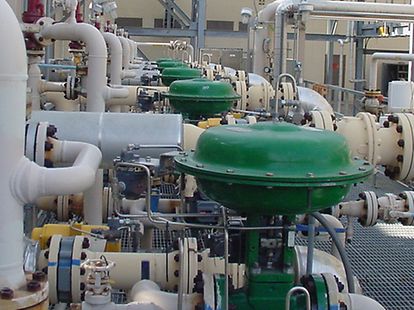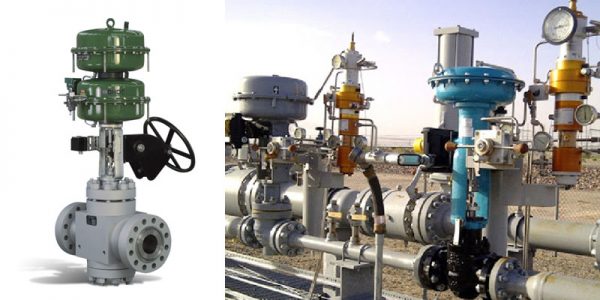Selecting the Right Control Valves: An Overview to Optimum System Efficiency
Selecting the Right Control Valves: An Overview to Optimum System Efficiency
Blog Article

Maximize Energy Savings and Convenience With Advanced Structure Automation Controls
In the realm of modern design and center management, the assimilation of sophisticated building automation regulates stands as a pivotal advancement. The merging of technology and sustainability has birthed a brand-new period where power efficiency, convenience optimization, and functional streamlining are no more achievable realities yet distant desires. By taking advantage of the power of automation, buildings can adapt, react, and evolve in means that were once unimaginable. The potential for considerable power cost savings and boosted comfort is not just an opportunity but an assurance waiting to be met. This paradigm change in building monitoring holds the crucial to opening a world where ecological conscientiousness and occupant wellness harmoniously exist together within the wall surfaces of our structures.
Power Efficiency Conveniences
Power efficiency benefits can considerably minimize energy usage and operational costs in structures. Energy-efficient systems, such as sophisticated building automation controls, can maximize the use of sources like air conditioning, lights, and heating, leading to lower energy expenditures over time.
In addition, improved power effectiveness can prolong the life-span of structure equipment and systems. By operating extra successfully, heating and cooling systems, lighting fixture, and various other building components experience much less wear and tear, causing decreased upkeep and substitute expenses. Additionally, energy-efficient structures commonly command higher property worths and rental rates, supplying long-term economic advantages to owners.
Moreover, power effectiveness can enhance owner comfort and performance. Correctly managed indoor atmospheres with optimal illumination and thermal conditions produce an even more favorable and pleasant workspace, bring about enhanced staff member fulfillment and efficiency. Overall, the energy efficiency advantages connected with advanced building automation controls are complex, encompassing expense financial savings, ecological stewardship, and occupant well-being.
Boosted Comfort Control
Enhancing comfort control in structure settings requires an innovative assimilation of advanced automation systems for optimal resident wellness. By making use of innovative building automation controls, facilities can tailor the interior environment to fulfill the particular requirements and preferences of passengers. These systems make it possible for exact guideline of air flow, lights, and temperature level, developing a efficient and comfortable environment. Passenger fulfillment and efficiency are carefully connected to thermal comfort, making it important to have systems in area that can adjust to transforming conditions in real-time.
Enhanced convenience control goes beyond standard temperature level modifications. It includes functions such as tailored setups, occupancy sensing units, and natural light utilization to develop a receptive and dynamic environment. By integrating these sophisticated controls, buildings can not just improve convenience however also improve power efficiency by maximizing system operations based upon actual occupancy and usage patterns. Ultimately, focusing on owner convenience with advanced automation systems brings about a more delightful and healthier indoor setting.
Functional Efficiency Improvements

In addition, the execution of real-time tracking and analytics devices enables building drivers to recognize energy inadequacies and operational abnormalities promptly. By constantly keeping track of power use patterns and system performance metrics, modifications can be made in real-time to maximize power intake and guarantee peak functional performance. control valves. Additionally, incorporating demand response methods into structure automation controls can better enhance functional efficiency by dynamically changing power use based upon grid problems and prices signals
Indoor Environment Optimization
Reliable interior environment optimization is a fundamental aspect of structure automation controls, guaranteeing residents' comfort and wellness while making the most of energy savings. By using sophisticated sensors and controls, developing automation systems can constantly keep an eye on and adjust temperature, humidity degrees, air top quality, and air flow to produce an ideal indoor environment. Maintaining comfy and constant conditions not only enhances resident contentment yet additionally improves efficiency and overall health.
Interior read more environment optimization likewise plays an important function in energy effectiveness. By fine-tuning air flow, home heating, and air conditioning systems based on real-time data and tenancy patterns, building automation controls can considerably minimize power usage - control valves. Executing strategies such as demand-controlled air flow and thermal zoning can assist minimize power waste while guaranteeing that each area of the structure receives the essential conditioning.

Lasting Atmosphere Development
Building automation controls not only enhance indoor climate problems for power effectiveness and passenger convenience yet additionally lay the structure for producing a sustainable environment through tactical management of sources and systems. By integrating advanced structure automation technologies, such as sensing units, actuators, and smart software application, facilities can change and keep an eye on energy use in real-time to lessen waste and decrease their carbon impact. These systems enable anticipating upkeep, identifying possible concerns before they escalate and maximizing devices performance to enhance long life and effectiveness.
Moreover, sustainable setting creation prolongs beyond energy administration to encompass water preservation, waste reduction, and indoor air high quality improvement. Structure automation controls can you could try here control water usage, detect leakages, and ensure appropriate waste disposal practices, adding to total sustainability efforts. In addition, by checking and managing air flow and purification systems, these modern technologies improve owner health and efficiency while lowering energy usage associated with cooling and heating operations.
Final Thought
To conclude, advanced building automation regulates offer considerable advantages in terms of energy cost savings, convenience control, functional effectiveness, interior climate optimization, and producing a lasting setting. By implementing these controls, buildings can attain optimal performance while minimizing power usage and boosting occupant comfort. It appears that making use of innovative automation modern technology is important in improving building performance and producing a much more lasting future.
Energy effectiveness benefits can substantially lower power intake and functional prices in buildings. Overall, the energy efficiency benefits linked with advanced building automation controls are multifaceted, encompassing cost savings, ecological stewardship, and owner health.
In addition, including demand reaction strategies into building automation controls can better improve operational performance by dynamically readjusting energy usage based on grid conditions and prices signals.
Building automation regulates not just enhance interior climate conditions for energy efficiency and occupant convenience however also lay the structure for creating a lasting atmosphere via critical administration of resources and systems.In conclusion, advanced building automation manages offer considerable benefits in terms of power savings, comfort control, functional efficiency, click here to find out more interior climate optimization, and producing a sustainable atmosphere.
Report this page